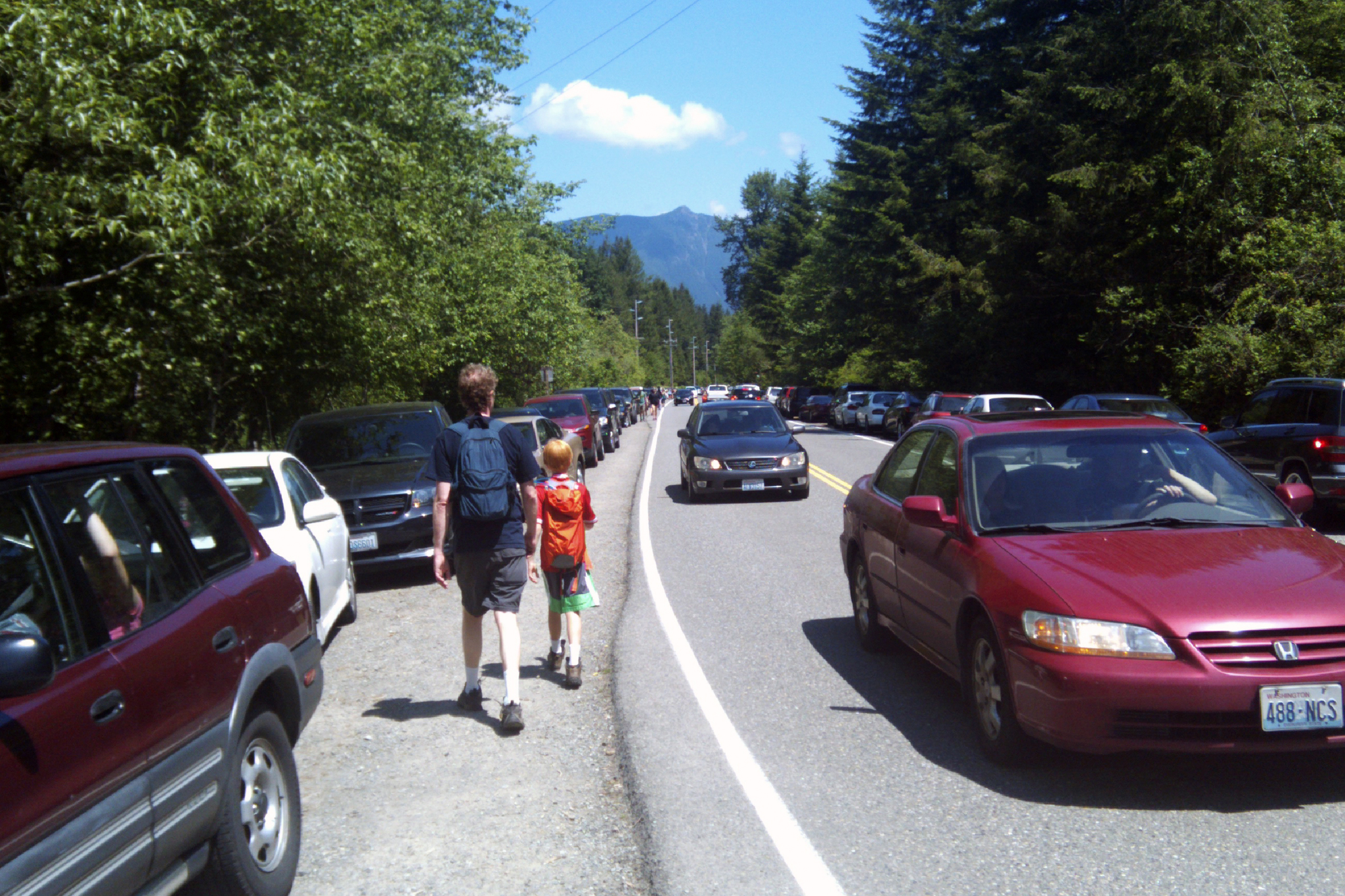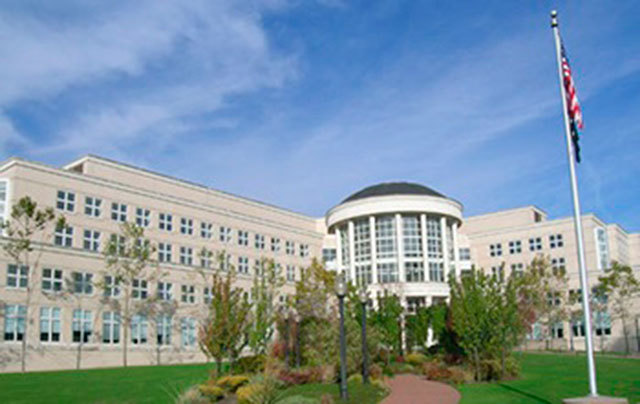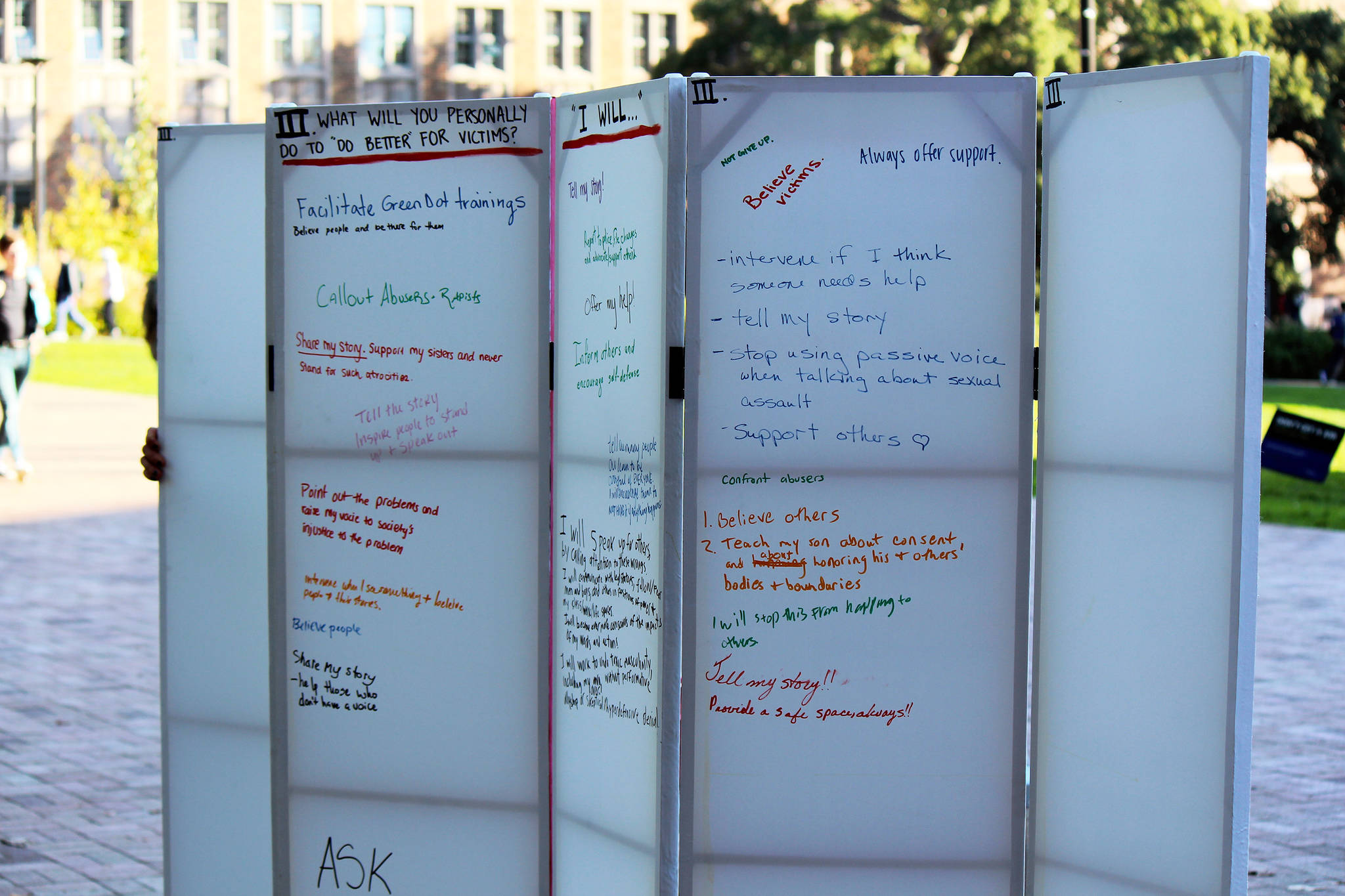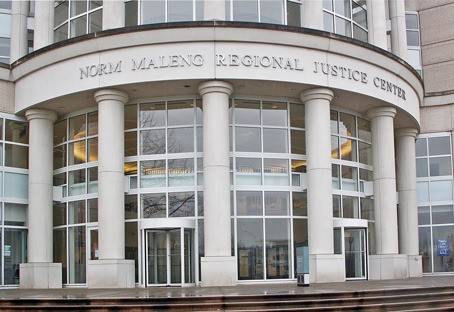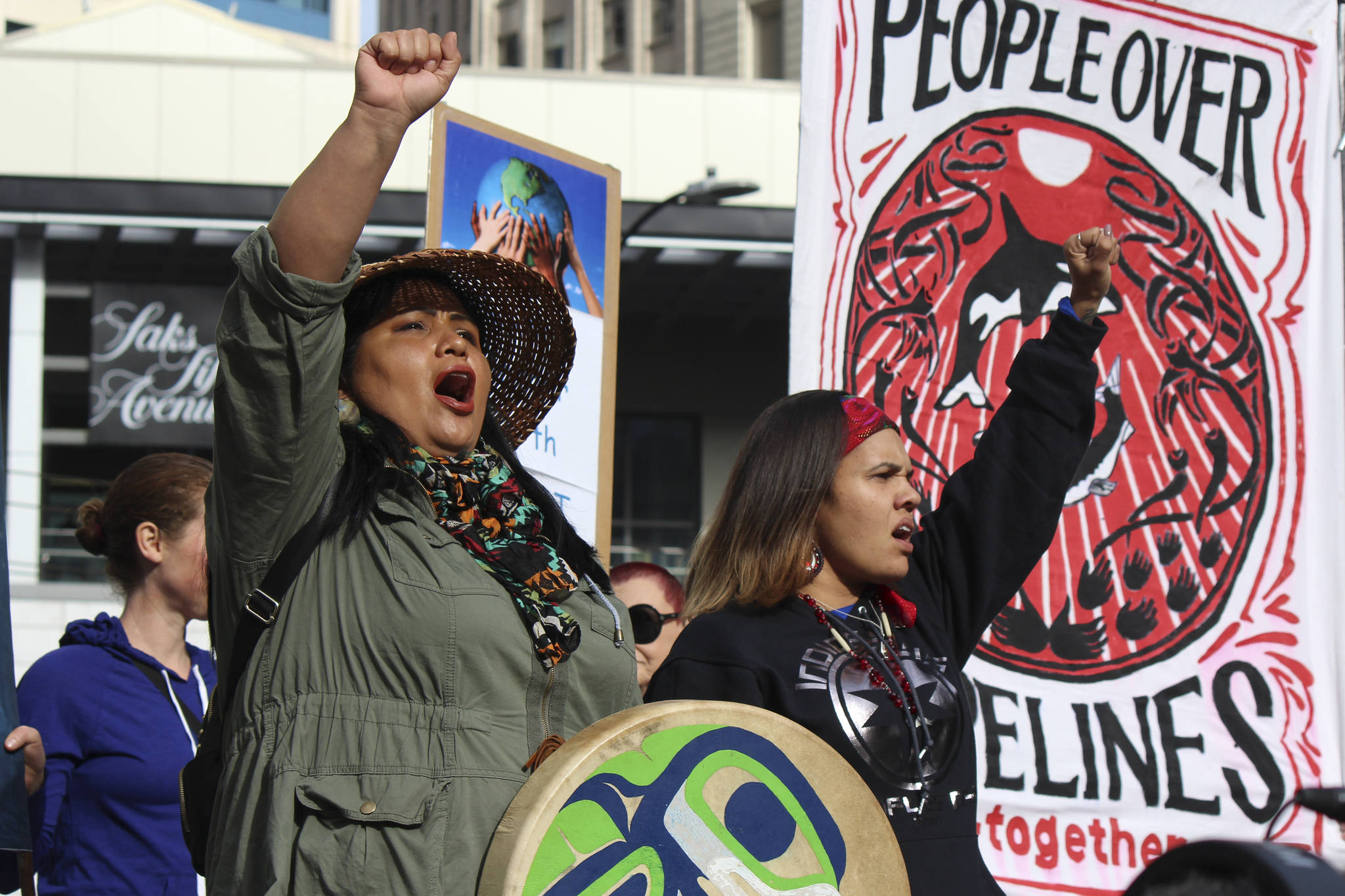For Seattleites, the scene is all-too-familiar: It’s a sunny Saturday, you’ve been starved for light all winter, and you’re eager to get away from the urban throngs and take some deep, glorious breaths of mountain air. So you hop in a car, head east on I-90, get to the nearest trailhead, and gasp, because not only is the parking area crammed to the gills, but the line of cars stacked along the road leading up to it seems to stretch for a million miles.
Your misgivings about hiking with the crowds you just left is one thing. But there’s also, quite literally, no place to park.
In some spots close to Seattle, like the Mount Si and Mount Teneriffe trailheads, so many people are parking in and around driveways and every questionably-legal square inch of curb that the King County Sheriff’s Department recently gave staffers at the Department of Natural Resources (DNR) legal authority to ticket and tow. There’s also so much spillover that nearby residents have begun charging hikers $5 to park in their yards. “It’s a pretty bad situation,” says Katie Woolsey, natural areas manager and state lands steward for the DNR’s South Puget Sound Region. “People are squeezing in” all over the place, sometimes creating such stiff conditions that emergency vehicles can’t get through. “It’s a free-for-all.”
Sure, it’s nice that we live in the birthplace of REI and people care about exploring the gorgeous wilderness all around us. The problem is we all need a car to get there. Public transit to the trails? It exists. Technically.
The Sound Transit 554 bus heads from Seattle to Cougar Mountain in Issaquah, for example. There’s also a new Snoqualmie Valley Transportation bus route that runs from downtown North Bend to Rattlesnake Lake for $1, but only on the weekdays (d’oh!).
Last summer, the DNR, the Washington Trails Association (WTA), and the Mountains to Sound Greenway Trust launched a pilot program running a shuttle from downtown North Bend to Mount Si, Little Si, and Teneriffe trailheads. But it’s not running this summer. “We learned some good lessons from that,” says Woolsey, including that a shuttle to Mount Si should really be running in the spring and fall, not the height of summer when the crowds are heading further east for the higher-elevation hikes. Plus, it was only die-hard Seattleites who were able to eschew cars entirely; they first had to take a bus to Issaquah, then another bus to North Bend, and then the shuttle to Mount Si.
The problem is a thorny one. “It’s complicated for a number of reasons,” says Loren Drummond, digital content manager for the WTA. “On the public transit side,” for instance, “there are a lot of different agencies and government organizations [that need] to coordinate to make it work.” Often, each coveted chunk of land is regulated by a different authority — the U.S. Forest Service, the state DNR, the state parks — and those agencies can’t make public transit decisions. Also, expanding a parking lot may not only require funding and cooperation from several agencies, but sometimes, Drummond says, there frankly “just isn’t room.”
The good news is that lots of people are working on it. The DNR’s Snoqualmie Corridor Recreation Plan, a blueprint for management of the area over the next 10 to 15 years, includes plenty of recommendations for shuttles and parking lot expansions, and this spring, the agency got a huge chunk of money from the state legislature to actually make some of them happen. The DNR “usually gets about a million dollars for recreation projects statewide,” says Woolsey. “But this year we got $2.3 million” just for projects in the Mount Si and Mount Teneriffe areas.
Among the short-term efforts: A new trailhead and parking lot to access Mount Teneriffe with space for about 80 cars, instead of the current 20, slated for launch next summer. There will also be lots of new trailheads along the Middle Fork Road next summer, when it’s fully paved (as is, potholes that could swallow an Outback keep the number of drivers there in check). But when the road becomes open to everyone with a Prius, “There won’t be enough parking, Day One,” says Woolsey.
To that end, the Mountains to Sound Greenway Trust applied for a Forest Service grant to get a shuttle to run down Middle Fork Road next summer; the group will know more this fall about that. Shuttles to hotspots, though, “are a short-term solution,” says says Jennifer McKeown, Snoqualmie Program Manager for the Greenway Trust. “Long-term is a [transit] system for this whole area, the I-90 corridor.” She says the Trust is “in the very early stages” of working with the Alternative Services Branch of King County Metro Transit to figure out how to better connect the masses with trailheads.
That seems to be the smartest thinking on this issue; as many studies have shown, building more infrastructure for cars — like expanded parking lots — tends to simply encourage more people drive cars, and then we’re back where we started. Last fall, the DNR acquired 82 acres of timberland near the trailhead to Mailbox Peak, and part of that will likely turn into parking, says Woolsey, which sounds like a relief. But is that all we’ve got — cutting down trees so that more people can get to the trees?
Of course, there’s not a single solution to this trailhead disaster. “It’s going to have to be a whole sweep of things,” says McKeown, “and it’s going to have to be gradual.”
Other ideas include the WTA’s Lost Trails Found campaign — an effort to reclaim and maintain washed out, overgrown, eroded, or just-plain-forgotten trails, in part to relieve the pressure on poor Mount Si. The group plans to rehabilitate at least five by 2020. Also, the Greenway Trust is actively seeking parking areas in downtown North Bend that can serve as trailhead alternatives, and working on building trail connectors so people can start their walk in North Bend.
For the hardcore public transit riders out there, there is an app for that, too: TOTAGO (which, ironically, stands for “Turn Off The App Go Outside”) helps people find the existing, if less-than-awesome, transit options between them and a local trailhead. (Pro tip: having a bike helps a lot; TOTAGO suggests bus routes that still leave you a couple miles down the road.)
In all, the people working on this issue are cautiously optimistic. We’ve got a long way to go, and trail crowding will only become more prevalent as the region’s population continues to explode. Sound Transit predicts that by the year 2040, this area will grow by a million people, a 32 percent increase. Many of those newcomers will likely be drawn by promises of access to the outdoors.
That sounds like bad news, but it’s also good news. If “there are a lot more people interested in getting out and hiking, hopefully that will translate” into concrete policy changes, says Drummond. “We need to connect the dots: Love for outside spaces, and advocacy to care for them.”
